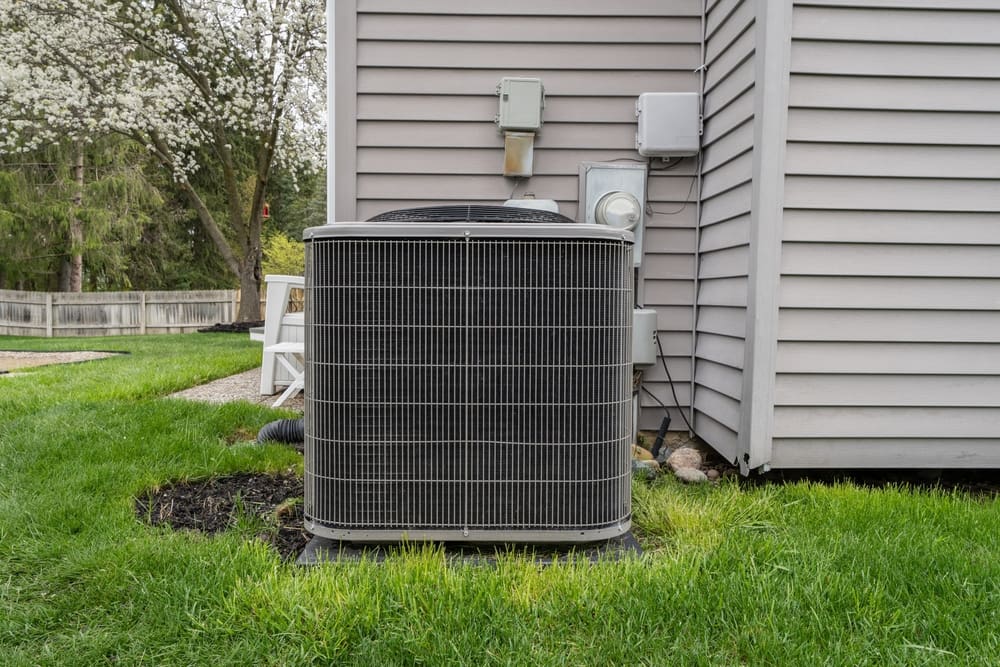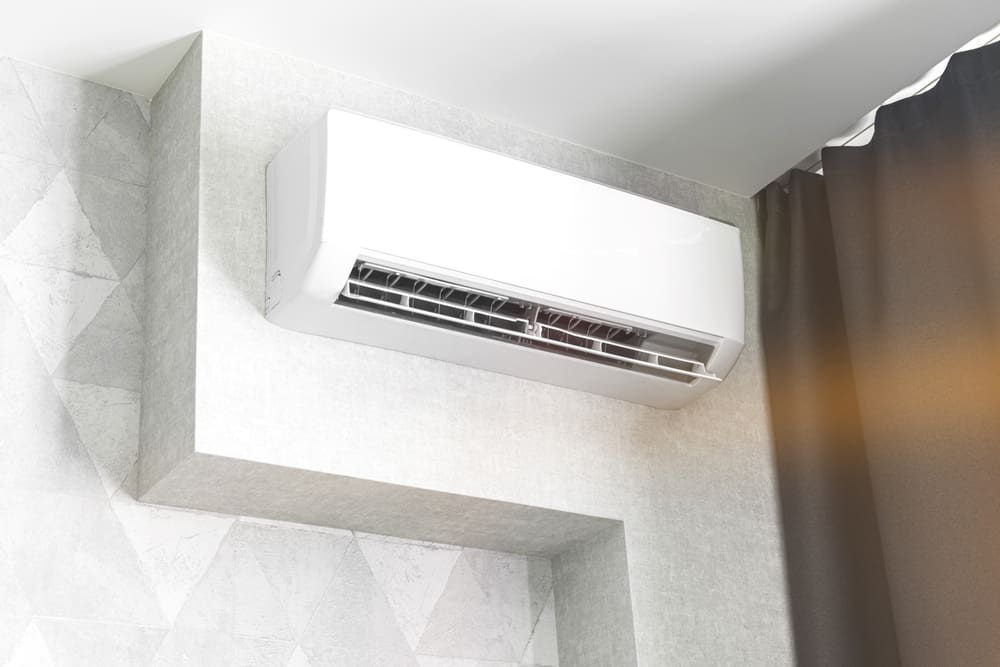At Sunny Services, we know that the impact of your home’s temperatures can often be easily forgotten or taken for granted. When it comes to cooling our homes, selecting the right air conditioning system to maintain an optimal temperature in your living space is essential for comfort, health, efficiency, and cost-effectiveness.
If you’re building a new home or want to replace your outdated air conditioning system, it’s a good idea to weigh the options between central air conditioning and ductless mini split systems. If you’re unfamiliar with what mini splits are, rest assured that Sunny Services is here to help. In this blog, we’ll go over the similarities and differences between mini splits and central air to help you better understand your home and, consequently, make an informed decision that best meets your preferences and price-range.
What Is a Mini Split System?
A mini split system, also known as a ductless mini split system, provides cooling (and often heating) to specific areas or zones within a building without the need for traditional ductwork. These systems consist of one outdoor unit and one or more indoor units, connected by refrigerant tubing and electrical wiring. The indoor units are typically mounted on walls, ceilings, or floors, and they deliver conditioned air directly into the living space.
The Components of a Mini Split System and How They Work
Outdoor Unit
This unit contains the compressor, condenser coil, and fan—and is responsible for generating cool air. The compressor circulates refrigerant through the system to absorb heat from indoors and release it outdoors.
Indoor Unit
Each indoor unit contains an evaporator coil and a blower fan. When the system is in cooling mode, the indoor unit takes heat from the indoor air and blows cooled air into the room. In heating mode, the process is reversed, with heat being extracted from outdoor air and transferred indoors.
Refrigerant Tubing and Wiring
The outdoor and indoor units are connected by copper refrigerant tubing and electrical wiring—which are important to consider for an installation. These wires and tubes connect to each other to exchange refrigerant and send electrical signals necessary for the system to operate.
The Benefits of Mini Split Systems
Flexibility in Installation
Mini split systems offer flexibility in installation because they don’t require ductwork. They can be installed in a variety of locations to best suit the specific needs of the space. Additionally, different styles of indoor units make it easy to customize your mini split system to fit the aesthetics and layout of the room.
Zoning Capabilities
Mini split systems also allow for zoning, meaning different indoor units can be controlled independently, providing personalized comfort to different areas or zones within a home or building. This zoning capability can increase energy efficiency and cost savings by only heating or cooling certain zones/spaces.
Energy Efficiency
Zoning isn’t the only reason why mini split systems are the most energy efficient HVAC cooling system. Mini splits blow air directly into the living space without the use of ducts, avoiding the energy losses associated with ductwork, such as leaks and heat transfer.
What Is Central Air Conditioning?
Central air conditioning is a cooling system that operates from a central location within a home or building to provide even cooling throughout. It typically consists of an outdoor unit containing the condenser coil, compressor, and fan, as well as an indoor unit that houses the evaporator coil. These components work together to cool air which then gets distributed through ductwork.
The Components of a Central Air System and How They Work
Outdoor Unit
This contains the condenser coil, compressor, electrical components, and a fan. The compressor pressurizes the refrigerant, the condenser coil releases heat from the refrigerant, and the fan blows air over the condenser coil to dissipate heat.
Evaporator Coil
Located indoors, typically installed on top of a gas furnace, the evaporator coil absorbs heat and humidity from indoor air as refrigerant passes through it. The refrigerant then carries this heat and humidity to the outdoor unit.
Expansion Valve
This valve, usually located near the evaporator coil, regulates the flow of refrigerant into the coil, controlling the amount of cooling provided.


The Benefits of Central Air Conditioning
Even Cooling Throughout the House
Central air conditioning systems are designed to provide consistent cooling to all areas of a building, ensuring even temperatures throughout.
Indoor Comfort
Central air conditioning maintains comfortable indoor temperatures and reduces humidity levels, enhancing overall comfort during warm weather.
Cleaner Air
Central air systems typically include air filters that remove airborne particles such as dust and lint, resulting in cleaner indoor air quality.
The Limitations of Central Air Conditioning
Higher Installation Costs
Central air systems often require significant upfront costs for installation, especially if ductwork needs to be installed or modified.
Lack of Zoning Capabilities
Traditional central air systems lack zoning capabilities, meaning they cannot independently control temperatures in different areas or zones of a building. This can lead to energy inefficiencies and discomfort in unused or less frequently occupied spaces.
Similarities and Differences: Mini Split vs Central Air
| Mini Split | Central Air | |
| Energy-Efficiency Uses less energy and lowers your energy bills. | ✔ | X |
| Easy Installation No ductwork makes mini split systems easier to install. | ✔ | X |
| Low Upfront Cost Mini splits are cheaper upfront since they don’t need ductwork. | ✔ | X |
| Performance Mini splits better control the temperature in your home. | ✔ | X |
| Customization Mini splits have better zoning capabilities due to no ductwork. | ✔ | X |
Choosing which system is best for you can be difficult since ductless mini split systems and central air conditioning offer unique benefits. To better understand them, let’s delve into a detailed comparison:
Efficiency
When it comes to energy efficiency, both ductless mini splits and central air systems have their strengths. Ductless mini splits, with their superior efficiency and zoning capabilities, allow for precise temperature control in different areas of the home. This targeted cooling can lead to lower energy consumption and reduced utility bills compared to central air systems.
Installation
Installation is where the two systems differ significantly. Central air systems require ductwork to distribute cool air throughout the home, making installation complex and challenging in older homes or spaces without existing ductwork. On the other hand, ductless mini splits offer unparalleled flexibility in installation. With no ductwork required, installation is relatively straightforward and minimally invasive.
Cost
When considering costs, both upfront expenses and long-term maintenance must be taken into account. Central air systems typically come with higher upfront costs due to the need for ductwork installation. The complexity of this process can significantly impact the overall cost of the system. In contrast, ductless mini splits generally have lower upfront costs, especially in situations where ductwork installation is not feasible. While the initial upfront cost may be lower, it’s essential to also factor in long-term maintenance costs.
Performance
The performance of any cooling system is crucial to a happy and healthy home. Both ductless mini splits and central air systems excel in cooling performance, providing reliable and consistent comfort throughout the home. Ductless mini splits typically operate quieter than central air systems, whereas central air systems tend to have better indoor air quality due to their advanced air filters.
Customization
One of the most significant advantages of ductless mini splits is their zoning capabilities. These systems allow for individual control of temperature in different zones or rooms, providing personalized comfort tailored to specific preferences. This level of customization is unmatched by central air systems, which typically operate on a single-zone setup, cooling the entire home at once.
Which System Is Right for You?
Choosing between ductless mini splits and central air conditioning systems involves careful consideration of several factors based on your specific needs and circumstances. Let’s delve deeper into these considerations to help you make an informed decision.
Budget Constraints
Budget plays a significant role in determining the most suitable cooling solution for your hole. Most times, the central air conditioning system is more expensive to install and upkeep due to its ductwork—mini splits offer cheaper upfront costs and can save you money down the road with better energy efficiency.
Home Layout and Existing Infrastructure
The layout of your home is also crucial to consider what system is best. Ductless mini splits are quick to install and are ideal for homes without ductwork. However, extreme temperatures may impact the effectiveness of mini split systems, making central air conditioning a more reliable option in regions that have diverse and severe climates.
Personal Preferences in Energy Efficiency and Comfort
Your personal preferences regarding energy efficiency and comfort also play a significant role in the decision-making process. Ductless mini splits offer unparalleled customization options, allowing you to control specific zones or rooms independently. This flexibility is ideal if you have rooms that are rarely used or if different areas of your home require different cooling preferences. On the other hand, central air conditioning provides consistent cooling throughout the entire home, making it more convenient if you prefer uniform temperatures throughout.
Consider a Mini Split System from Sunny Services
When you’re considering your cooling options for your home or business, don’t overlook the advantages of ductless mini split systems. While there are many benefits of a central air conditioning system, mini splits provide unmatched flexibility, energy efficiency, and personalized comfort. If you’re interested in learning more or would like to talk to one of our mini split HVAC specialists, call Sunny Services today or request an appointment online. Our dedicated team of experienced professionals is ready to help!





